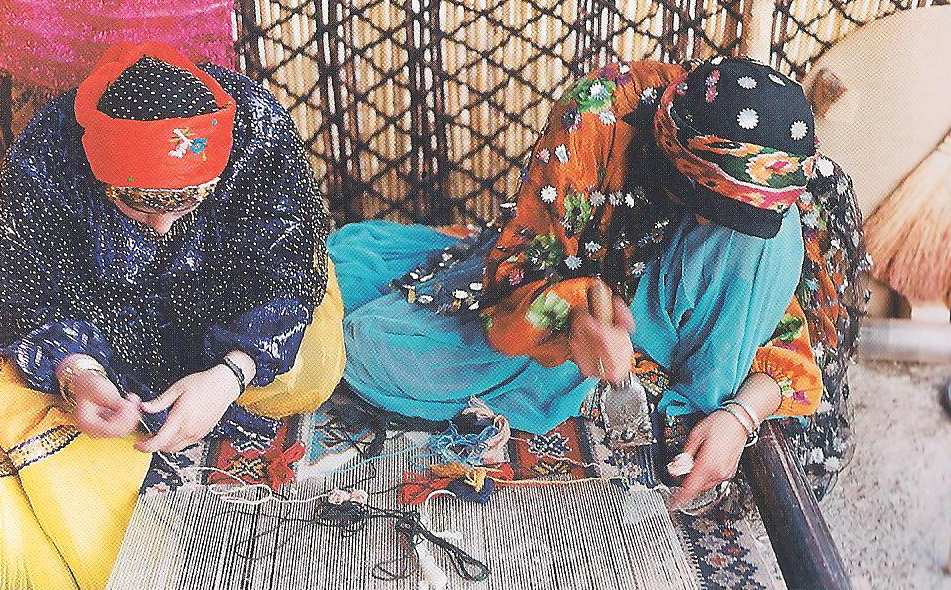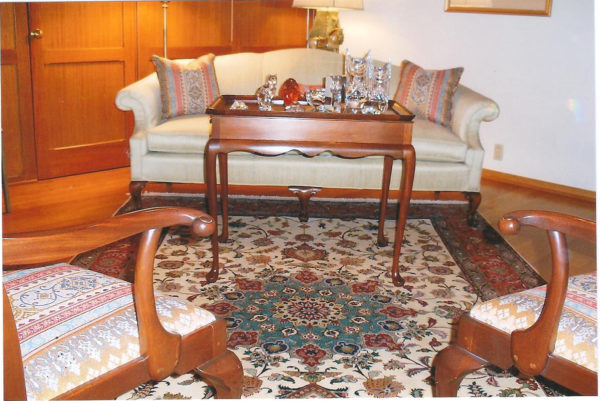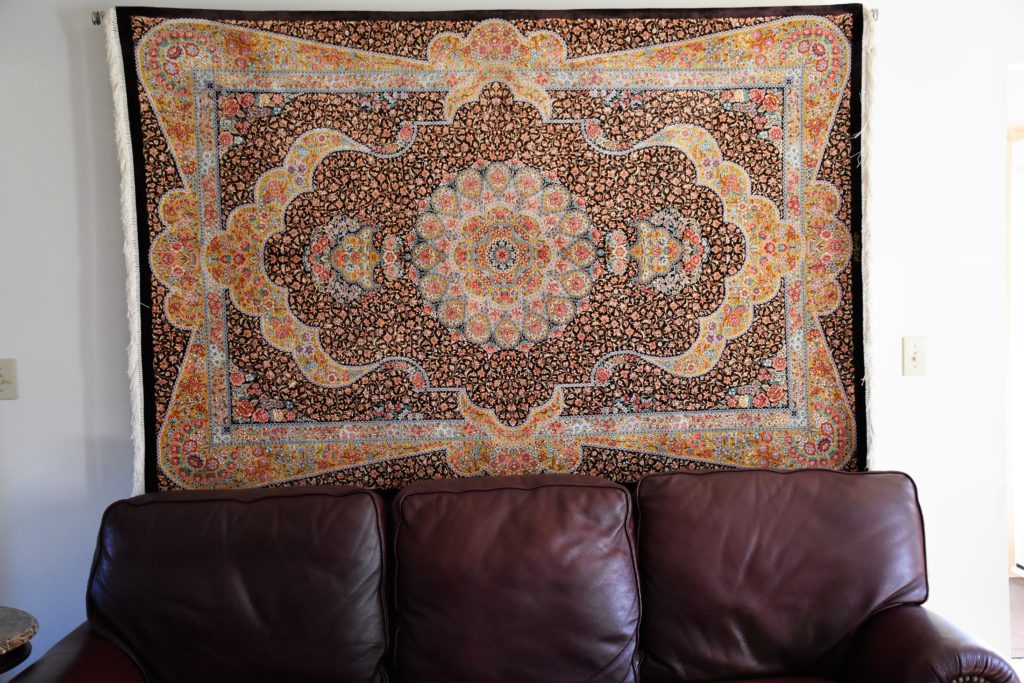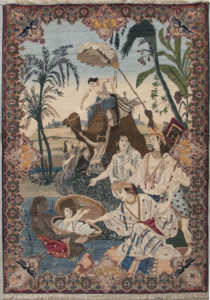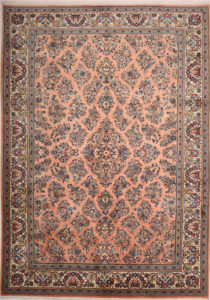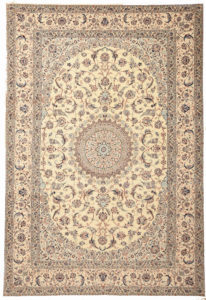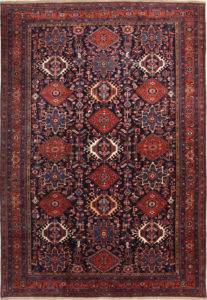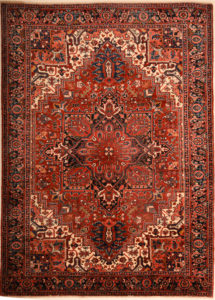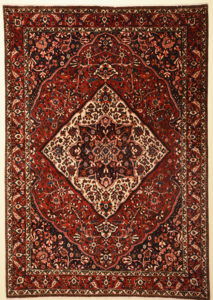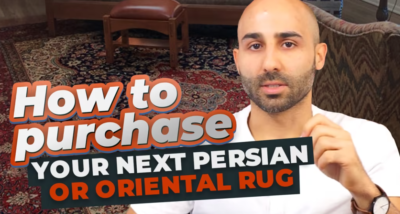These are some of the questions people seek answers to when buying an authentic hand-knotted Persian rug or Oriental rug. We’ve put together the answers to these questions below.
Table of Contents
Persian rugs are renowned for their beauty, durability, and warmth. When they are properly cared for and maintained, they can last for several years.
Some of the most beautiful pieces are proudly cherished and cared for by many generations.
If you have an interest in collecting these rugs for art purposes, we have some tips and guidelines to help the absolute beginner make the most out of buying a Persian rug.
Tribal Rugs V/S City Rugs
Tribal Rugs
Tribal rugs generally have bolder colors and a looser weaves with as few as 50 knots per square inch. Most tribal rugs tend to feature bold, simple, geometric designs.
There is a distinct lack of complex patterns. This is because the looser weave restricts the number of shapes that can be produced.
Weavers who produce tribal rugs almost always use hand spun wool from the sheep that they themselves rear and the dyes that are used are manufactured from the leaves and roots of plants found in that particular region.
7 Types of Tribal Persian Rugs
City or Traditional Rugs
Traditional Persian rugs on the other hand are more elaborate and sophisticated with a higher knot count. This higher knot density allows the weavers to produce busy patterns that are much more intricate and multifaceted.
Kermans, Isfahans, Qums and Kashans are some of more well known Persian city rugs. In weaving these city rugs, weavers in each of these cities follow complex, curvilinear designs that have been sketched on paper by palace artists.
The coloration are as complex as the designs themselves. Each of these rugs can take a long time to complete.
Before you forge ahead with your rug buying, you need to decide whether you want to buy a tribal or a city rug. Another important aspect that you should keep in mind when buying Persian rugs is that you cannot compare tribal rugs and city rugs.
City rugs will always win with regards to better finish, sleeker looks and higher knot count. However, although tribal rugs have lower knot counts and a less than perfect finish, they have a rugged, folk-art look that has its own charm. Unless they are outrageously badly made (which is very rare), these rugs are considered to be of fine quality.
When comparing, make sure you only compare tribal with tribal and city with city.
7 Types of Traditional Persian Rugs
How Long Does Authentic Persian Rugs Last
With regular care and maintenance, an authentic Persian rug can last more than 100 years, as with antique Persian rugs. The secret to their durability is in the materials used and how they are constructed.
Some of the hardier rugs can last for generations even if they are placed in high-traffic areas.
Does Size Affect the Value of a Persian Rug
Yes, size is one of the major factors that affects the value of a Persian rug. This is primarily because these rugs are made entirely by hand. Weavers spend hours making one knot at a time to create these magnificent pieces.
The bigger the rug, the more time it takes to complete. A lot more materials also go into making larger rugs. The higher price is because of the extra time and materials required.
However, there are a few exceptions to this. A small rug made entirely from silk with a high knot count can sometimes cost more than a larger wool Persian rug with a low rug count.
The materials, uniqueness, knot count, and design are some of the other factors that impact the price of a rug.
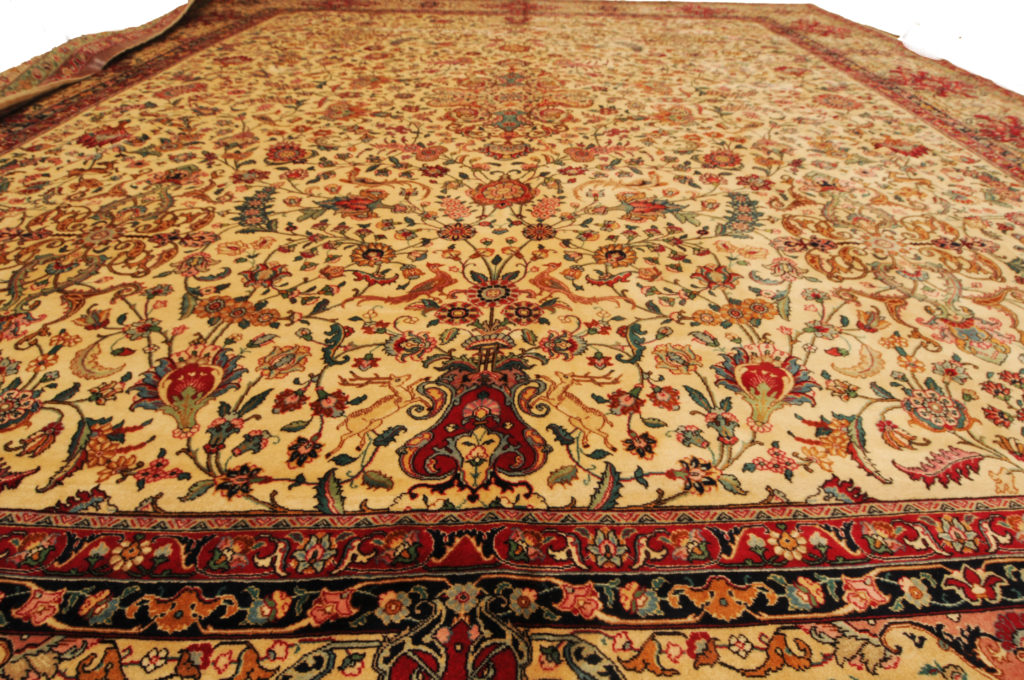
Is The Rug Hand-Woven Or Machine Made
All Persian rugs are completely hand-woven by skilled weavers. One of the best ways to make sure you really are getting a hand-woven piece is to check the knot work on the back of the rug.
Look for small imperfections and variations of the knots. Check the knot work around the border of the rug. Handmade Persian rugs will always have slight imperfections because of the fact that they are hand-knotted.
Interestingly, these little imperfections do not lower the value of the rug. Instead, they increase their value considerably.
Hand-woven rugs are made with all-natural materials and dyed with plant or vegetable dyes, so there will be a slight variance in color saturation and hue. Machine-made rugs will usually be absolutely smooth, both on the top side and the underside, and the colors will be unvarying throughout.
How To Buy A Good Persian Rug
Walking into a Persian rug store is like walking into a scene straight out of the Arabian nights with rows and rows of rugs in the most fascinating array of designs and colors.
As you look around soaking in the patterns and the hues and touching the soft wool, it wouldn’t be an exaggeration to say this is a rug-lover’s heaven. However, all rugs are not created equal and it is important to know what to look for when buying a Persian rug so you are not disappointed with your purchase.
Qualities To Look For in Persian Rugs
Consistency in the weave:
Check the front and back of the rug. Can you see flaws in the weave?
Irregular weaving is more easily detected on the back of the rug so make sure you turn it over and check.
Also a rug that has a consistent weave will lay smoothly on the floor without rippling, wrinkling or puckering.
If you see any of these inconsistencies as you lay the rug on the floor, take another look at it.
Do The Edges And Ends Look Straight
Inspect the edges and ends of the rug. In a good rug the edges will be straight, the width dimensions will be the same at both ends and the ends will be properly secured. Do not buy a rug if the ends are not properly secured as there is a higher likelihood it will unravel while vacuuming or cleaning.
Check The Fringe
If the rug has fringes at either end, the fringes should be neatly cut and the ends secured neatly and tightly. Cotton fringes are the best but wool is also good. It is best to avoid buying rugs that have discolored fringes or if the fringes are made of any fabric other than cotton or wool.
Fringes made of silk and other synthetic materials are considered undesirable.
Is there a consistency in the coloration? Persian city rugs are woven using lots of colors but there is always a consistency in the colors used.
Look for any aberrations in colorations. A darker colored patch could mean that the rug has been mended in another color, whereas a lighter colored patch could mean that the rug has faded over time. Both scenarios are unacceptable.
Knot Count
There is a huge variation in the knot count in Persian rugs and it really wouldn’t be fair to dismiss rugs with lower knot count as lower in quality. For instance, tribal rugs have a lower knot count but that is not necessarily mean they are of lesser quality. It is simply the weaving technique that is used.
When you are considering knot count, what you do need to know is rugs with a more intricate pattern will generally have a higher knot count and will also be much more expensive than rugs with a basic pattern or a lower knot count. Your decision will depend on how much you are willing to pay for a rug.
Check The Wool Elevation
Whether you prefer a rug with a higher or lower pile is purely a matter of personal preference. Rugs with a higher pile look and feel plusher but there are other benefits to rugs with a lower pile.
Low piled rugs attract less dirt and dust and are easier to clean. They also wear more evenly and are easier to place as furniture won’t wobble if you need to place your furniture half on and half off the rug because of space constraints.
Another way to test the quality of the wool is to run your hand over the wool nap. If it feels smooth and slightly oily, it is good.
Lanolin is a natural lubricant that is found in wool. Avoid buying any rug if the wool feels dry and brittle as it is not likely to last very long.
Decide On The Color Scheme And Palette
Do you want your rug to brighten up a dark room, or are you looking for something more muted?
Persian rugs use a multitude of colors, so if you are looking for specific shades, and many of these shades also have a variety of tones.
If you are buying a rug for a room that is not yet furnished or decorated, you will find that a rug in just about any color scheme will immediately enhance the look of the space.
However, if you are buying a rug for a furnished room, you should take extra care to buy a rug that will complement the existing décor.
Measure Your Space
When buying a Persian rug, your measuring tape will be your new best friend.
Make sure your space will display your new Persian rug to its fullest advantage.
A rug that is too small for the space may defeat the purpose, while a rug that is too big can be overwhelming and unsightly.
Ideally, you should look for a size that shows the rug off to its best advantage while it also ties the room together.
See our complete rug size guides for best advice on picking the correct size rug for your room.
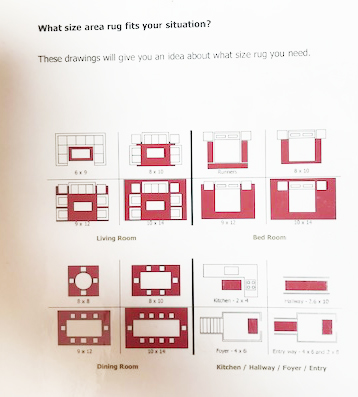
Don’t Forget The Rug Pad
If your Persian rug is going to be used in an area with heavy foot traffic with children and pets, make sure you measure for a rug pad to go underneath.
Rug pads not only protect the delicate knots and the pile of hand-woven rugs, but they add a measure of padding and warmth to your new Persian rug.
Always Buy From Reputed Sellers
Buying your Persian Rug from a reputed seller is so very important. Reputed sellers go to great lengths to make sure that every piece they sell is reliably sourced, completely hand-woven, and meets all the quality standards. This makes every rug a worthy investment.
How To Quickly Tell If A Persian Rug Is Authentic
Here are 4 easy tips to help you quickly tell if the Persian rug you are looking at is authentic:
- Flip the Rug – That’s right. Just turn the rug over and take a look at the underside. An authentic Persian rug will have slight imperfections in the knotting. This is because the knots are made entirely by hand. In machine-made rugs, the underside will look absolutely imperfect.
- Check out the Fringe – Not all rugs have fringes but if it does, take a closer look. If it looks like it is sewn or glued on, it is most likely machine made. In an authentic Persian rug, the fringe is a natural extension of the rug. Weavers just leave the extra material after they complete the side, which then forms the fringe.
- Check the Material – Authentic Persian rugs are always made from natural materials, most commonly wool, cotton and silk. If the rug is made from any man-made material, it’s not a genuine Persian rug.
- Ask an Expert – Some imitations are so well made, it may be difficult to make out for sure. If you have any doubts, contact us. We have been dealing with Persian rugs for several years and will be glad to examine the rug to determine whether or not it is authentic.
The best place to buy authentic Persian rugs is online though a reputed seller.
One of the reasons why we recommend buying rugs online is because you can browse through a larger selection from multiple sellers without even leaving your home.
Online sellers are careful not to tarnish their reputation and will go out of their way to help you choose a rug that’s a right fit for your space while also being a good investment.
